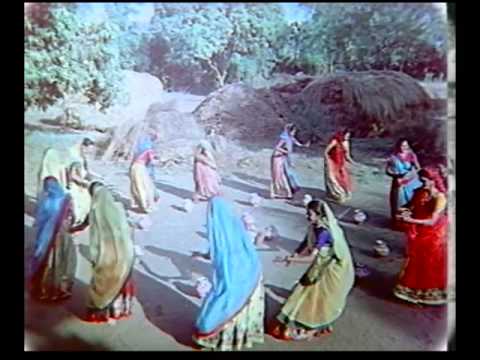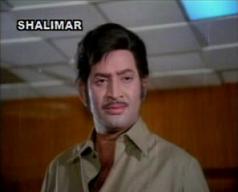Colour films in India
| Line 1: | Line 1: | ||
| + | {| class="wikitable" | ||
| + | |- | ||
| + | |colspan="0"|<div style="font-size:100%"> | ||
| + | |||
| + | At present readers cannot write directly on Indpaedia.com. They can, however,<br/> send additional information, corrections, photographs and even complete articles <br/>on new subjects to our Facebook page [http://www.facebook.com/Indpaedia Indpaedia.com]. If found suitable, <br/> additional information will be incorporated into the Indpaedia article (with an <br/> acknowledgement to you) and new entries will be created (also with due<br/> acknowledgement). </div> | ||
| + | |} | ||
[[File: kanchenjunga2.jpg|Kanchanjungha/ Bengali|frame|500px]] | [[File: kanchenjunga2.jpg|Kanchanjungha/ Bengali|frame|500px]] | ||
[[File: Liludi Dharti (1968).jpg|Liludi Dharti (1968) Gujarati|frame|500px]] | [[File: Liludi Dharti (1968).jpg|Liludi Dharti (1968) Gujarati|frame|500px]] | ||
Revision as of 16:10, 29 June 2013
At present readers cannot write directly on Indpaedia.com. They can, however,
send additional information, corrections, photographs and even complete articles on new subjects to our Facebook page Indpaedia.com. If found suitable, additional information will be incorporated into the Indpaedia article (with an acknowledgement to you) and new entries will be created (also with due acknowledgement). |
India was the sixth country to have produced a colour film; at most seventh, if firmer dates about the first Soviet colour film indicate otherwise.
Contents |
Assamese
The first colour film was Kamal Choudhury's Bhaity (1972)
(No photograph available. Can any reader help? )
Bengali
Kanchanjangha (Bengali: কাঞ্চনজঙ্ঘা Kanchonjônggha) (1962) written and directed by Satyajit Ray is arguably the first colour film in Bengali, Indian or East Pakistani. It was in Eastmancolour, which is more fragile than Technicolor. By the 1970s all complete colour prints of the film were lost and an international effort got together portions of the film available around them world, edited them together into a whole and restored the faded colours.
Gujarati
First Gujarat colour film: Liludi Dharti (1968).
Hindi-Urdu
Kisan Kanya (lit: the peasant girl; 1937/ Dir: Moti B. Gidvani; prod. Ardeshir Irani) was arguably the first colour film in Hindi-Urdu, of India and of South Asia.
Colour films in South Asia: 3-- Hindi-Urdu films in colour
Kannada
The first full-length colour film in Kannada, Amarashilpi Jakanachar, was released in 1964
Malayalam
The first Malayalam Color film was Kandam Vecha Coat in 1961
Chemmeen (1967) was in Eastmancolor.
Manipuri
Three films claim this honour.
Langlen Thadoi (1984) by MA Singh Maibam Amuthoi is the film that has the highest number of references claiming it to be the first colour feature film in Manipuri. However, Sanakeithel (1983), is also said to be the first colour film in Manipuri (indianetzone indianetzone). One source (e-pao) says that the first ever Manipuri colour film was produced by K.P Films International in 1989; this source obviously cannot be right.
Sanakeithel was made in 1983, according to Imdb. Its Director was M.A. Singh. Imdb confirms that it was in colour. Therefore, Sanakeithel was Manipur’s first colour film.
(No photograph available. Can any reader help?)
Marathi
Sairandhri (1933), processed and printed in Germany; would have been the first colour film in Marathi, and also India's first colour film. However, its processing was not successful.
So, the question is, which was the second colour film in Marathi, because Sairandhri’s final, released print was not in colour.
Odiya/ Oriya
The first Oriya Colour Movie was "Gapa Helevi Sata" (1976) though 'Samaya' (1975) was partially coloured).
Punjabi
Indian Punjabi
Nanak Nam Jahaz Hai (Punjabi: ਨਾਨਕ ਨਾਮ ਜਹਾਜ਼ ਹੈ), a 1969 National Award winning Punjabi film directed by Ram Maheshwary, was the first Indian colour film in Punjabi.
Tamil
First Tamil film ‘entirely in colour’ was was Alibabavum Narpadhu Thirudargalum-1956 (Geva Color)
Veerapandiya Kattabomman (1959) is said to be the second Tamil film to be shot in Technicolor; it was, like other Indian Technicolor films before and after, printed in London. Which was the first? Well, Nadodi Mannan (1958) had a colour (reportedly Technicolor) sequence set on a tropical island.
The first Eastman color movie in Tamil was the cheerful comedy Kathalikka Neramillai (We don't have any time for love; I1964), a hit.
Telugu
First ‘entirely in colour’ film Lavakusa (1963/ GevaColor).
First Eastmancolor film Eenadu (1982)
See also
Colour films in South Asia: 1—South Asia as a whole.
Colour films in South Asia: 2 (Indian Cinema)—India as a whole.
Colour films in South Asia: 3-- Hindi-Urdu films.
CinemaScope and 70mm films Part 1: CinemaScope films
70mm films in India/ South Asia I.e. Part 2 of the above article












